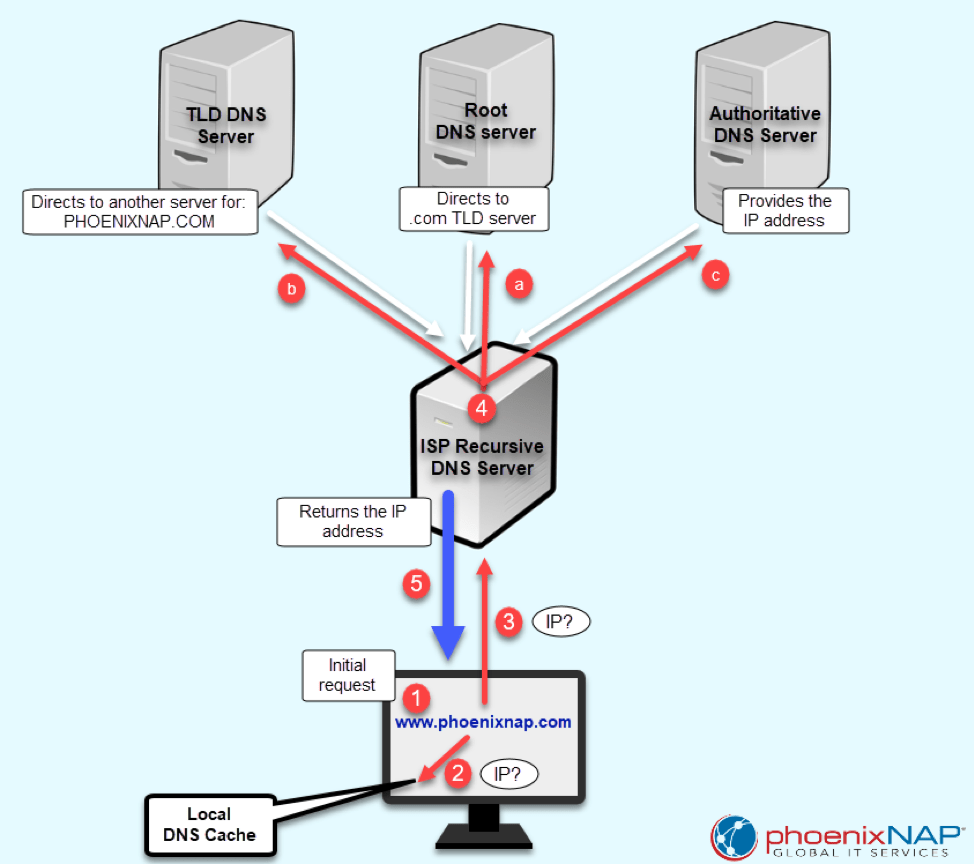

- FIND DNS INFORMATION FOR A MAC HOW TO
- FIND DNS INFORMATION FOR A MAC MAC OS X
- FIND DNS INFORMATION FOR A MAC MAC OS
- FIND DNS INFORMATION FOR A MAC MANUAL
- FIND DNS INFORMATION FOR A MAC PLUS

FIND DNS INFORMATION FOR A MAC HOW TO
That’s it – everything you need to know about DNS and how to flush your DNS cache on your Windows 10/8/7 & Mac OS. Macbook$ sudo discoveryutil udnsflushcachesģ) Now congrats! Your DNS cache has been erased. Sudo killall mDNSResponderHelper sudo dscacheutil -flushcache M acbook$ sudo killall -HUP mDNSResponder
FIND DNS INFORMATION FOR A MAC MAC OS
You’ll receive the message Successfully flushed the DNS Resolver Cache indicating a successful DNS flush.Ģ) Choose your Mac OS from the table below, then copy & paste the corresponding command lines into the Terminal window and press Enter after each: Choose your Mac OS Then right click on Command Prompt and click Run as administrator.Ģ) Copy & paste ipconfig /flushdns into the window and press Enter. Note: The screenshots below are from Windows 10, but the steps also work in Windows 8 & 7.ġ) On your keyboard, press the Windows logo key and type cmd. So we might have to erase the DNS cache to remove any invalid records so that our computer can find the latest DNS information for the website. But sometimes the DNS information of the website might have changed, hence different kinds of Internet connection and corrupted DNS issues. While using nslookup offers a simple way to get DNS information and an IP for a specific website or domain, if you want a significantly more detailed. What I might want to know about DNSĭNS ( Domain Name System) cache is a temporary database that keeps tracks of a specific website’s DNS information upon a user’s first visit so that the information can be conveniently reused for future reference. To find out whether you should connect to a specific DNS server, and what address to use, check with your ISP or network administrator. DNS issues (like DNS Server is not responding)Įtc, chances are you might have to flush your DNS cache to get everything back on track again.Internet connection issues ( Internet keeps disconnecting/dropping out, connection timed out error, 504 gateway timeout error, page slow or not loading).Enter DNS addresses specified by Internet provider.If your computer is experiencing any of the following: If you need to, you can use a free utility like namebench to find a fast DNS server.
FIND DNS INFORMATION FOR A MAC PLUS
Click the Plus ( +) button under DNS Servers box.ī. Router - Enter the desired default gateway address. With it, you may query a DNS server for information on specific computers. Subnet Mask - Enter the desired subnet mask.ĭ. In Mac OS X, to find the IP address or domain name of another networked device, use the Network Utility. IP Address - Enter the desired IP address.Ĭ. Click the Advanced button on the bottom of the Network window.Select Built-in Ethernet from the left-hand menu.Click the Network icon in the Internet & Wireless section.Click the Apple icon on the upper left-hand corner.
FIND DNS INFORMATION FOR A MAC MANUAL
Manual Configuration: Snow Leopard (10.6) and Leopard (10.5)
FIND DNS INFORMATION FOR A MAC MAC OS X
NOTE: Mac OS X is configured for a DHCP TCP/IP connection by default. Other options allow you to resolve requests. This document describes how to manually configure the TCP/IP settings within Mac OS X. You can obtain the address of a DNS server from a DHCP or PPPoE server, or you can specify static DNS servers. This is useful when the Mac computer needs to be remotely accessible, and NAT settings (such as port forwarding or DMZ) have been configured in the router. This is useful if you want to know certain information about a website or domain including geolocation of website hosted, check for email mx records, and validating a domain SPF record. You can use Terminal in Mac to lookup any and all associated host records for any domain name on the Internet. First I selected my network interface card and entered DNS information and my. How To: Mac Terminal Lookup DNS Records of a Domain Name. This will cause the IP address on the Mac computer to remain the same, and not change. Cognos' Scenario 2.0 can help you find those pearls and convert them into. This would include manually configuring the IP Address, Subnet Mask, Default Gateway, and DNS addresses. In some cases, the TCP/IP settings on the Macintosh machine may need to be manually configured for Internet access. To access the hosts configured with NAMO, you must enter the IP address of the NAMO DNS server in the network settings of your devices that you. Want to know the DNS names and IP addresses of all DHCP servers on your network If youre using Active Directory its easy, just open a command prompt and type.


 0 kommentar(er)
0 kommentar(er)
